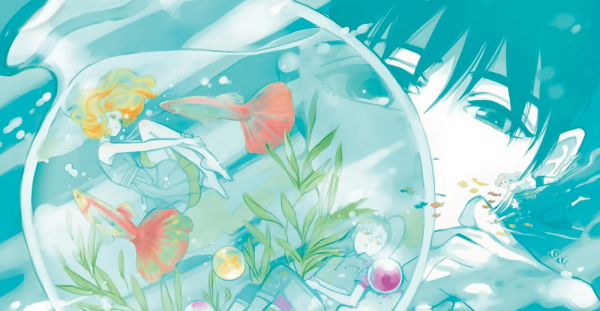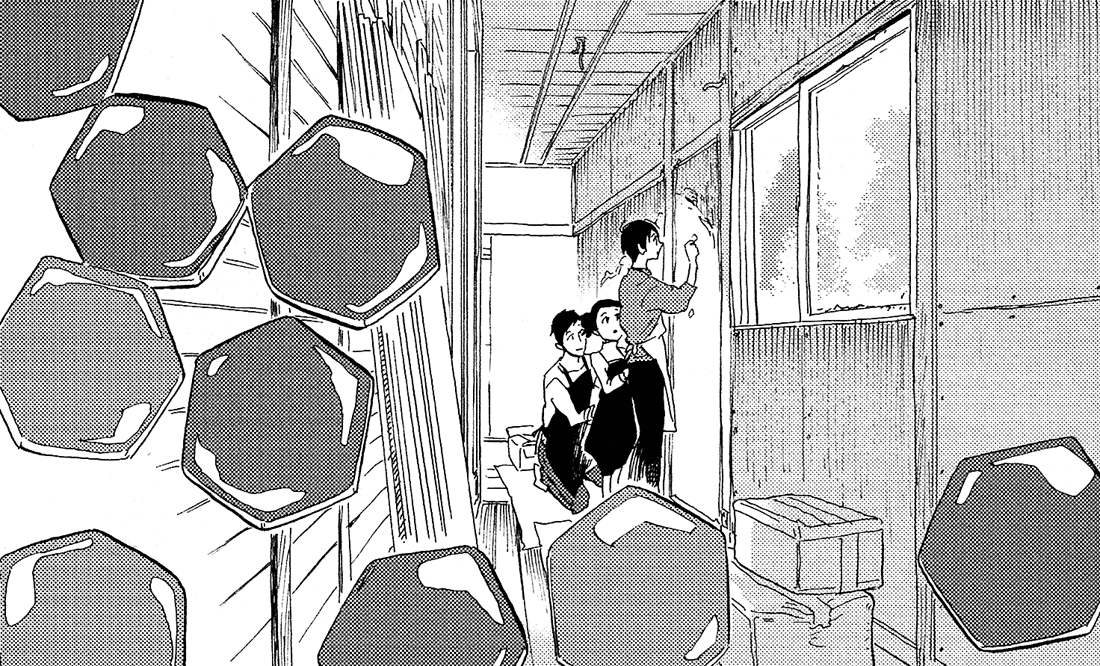This review explores Our Dreams at Dusk: Shimanami Tasogare, a heartfelt LGBTQ+ manga by Yuhki Kamatani. Through my personal reading journey on ComicK, I’ll share the story’s emotional impact, highlight its nuanced characters, discuss its delicate handling of queer identity, and reflect on both its strengths and moments that left me unconvinced.
A Personal First Encounter with Our Dreams at Dusk
When I first stumbled across Our Dreams at Dusk on ComicK, I wasn’t expecting it to hit me as hard as it did. The premise seemed simple: a teenager caught in the crossfire of gossip, shame, and identity. But within a few chapters, I realized this wasn’t just another coming-of-age manga it was something raw, tender, and painfully real.
Tasuku’s introduction felt almost too familiar. His panic after being “outed” by classmates transported me back to high school hallways, where rumors spread faster than wildfire and labels could burn deeper than any insult. Reading those early pages wasn’t just storytelling; it felt like eavesdropping on my own memories.
Yet, instead of wallowing in despair, the manga nudges readers into a safe space a mysterious community house. From the moment Tasuku crossed that threshold, I felt like I had, too. It was as though the story invited me to sit quietly in a corner, watching, listening, and slowly unraveling the weight of silence.

The Emotional Weight of Being Seen
What struck me most was how Kamatani captures that suffocating feeling of being observed. Not just seen, but judged, measured, and branded with an identity you’re still grappling with yourself. Tasuku’s anguish resonated with anyone who has ever lived under the scrutiny of others’ definitions.
Instead of preaching, the manga breathes. The panels linger, the silences are heavy, and the backgrounds shift from intricate detail to suffocating voids. I found myself pausing mid-page, staring at the empty white spaces, and realizing how cleverly they mirrored Tasuku’s isolation.
At times, it was almost too heavy. I caught myself needing breaks not because the story was slow, but because it pressed on wounds I thought had healed. And yet, that’s exactly why I couldn’t put it down. It was a reminder that art doesn’t just entertain; it reflects, exposes, and sometimes hurts in the best way possible.
The House of Strangers and Belonging
The LGBTQ+ support house is the heart of this manga, and for me, it’s where the story truly came alive. Each member of the house brought a different shade of humanity different fears, loves, and contradictions. This wasn’t a neatly packaged “support group.” It was messy, alive, and real.
I adored Haru’s confidence contrasted against Saki’s desire for privacy. Their tension wasn’t just about being “out” or “closeted” it was about two people navigating love in entirely different ways. Reading their moments reminded me of relationships in my own circle, where one partner wanted to shout love from the rooftops, and the other quietly cherished intimacy in private.
What impressed me most is how Kamatani resisted the temptation to give everyone a neat resolution. These characters live in flux, and that ambiguity is refreshing. It reminded me that identity is never a checklist it’s a lifelong process of tearing down walls and sometimes just pulling out one nail at a time.
When Reality and the Surreal Collide
There’s one part of Our Dreams at Dusk that left me conflicted: Someone-san, the mysterious figure who seems to blur the line between human and myth. While she added intrigue, I sometimes felt pulled out of the grounded narrative by her almost spectral presence.
On one hand, she functions as a metaphor an embodiment of mystery, resilience, or perhaps the unknowable nature of identity itself. On the other, her otherworldly aura occasionally clashed with the realism that made the rest of the manga so compelling.
As a reader, I oscillated between fascination and frustration. Did I want her explained, or did I prefer her as an enigma? Even now, I’m not entirely sure. Maybe that’s the point: identity often defies explanation, and not everything or everyone needs to fit neatly into a box.

Art That Speaks Without Words
Kamatani’s art is nothing short of breathtaking. The absence of fanservice is deliberate and powerful; instead of cheap thrills, the visuals carve out raw emotion. I remember pausing on a panel where music literally waves off the page it was as if I could hear it through the ink.
Backgrounds morph to reflect mood: detailed when life feels overwhelming, empty when loneliness swallows Tasuku whole. That shifting canvas became its own character, reminding me that the environment around us often reflects the battles inside us.
Reading on ComicK, the flow of the panels was smooth and uninterrupted, which only amplified the art’s power. I didn’t feel like I was flipping digital pages I felt like I was stepping in and out of someone else’s mind.
A Story That Stays After the Last Page
Finishing the first volume left me with a strange mix of heaviness and hope. This isn’t the kind of manga you breeze through and forget. It lingers. It asks questions. It sits beside you in silence long after you’ve closed the tab.
For me, it reopened old wounds but also offered quiet healing. It reminded me of the importance of safe spaces, chosen families, and the small victories of self-expression. At the same time, I won’t pretend it’s flawless Someone-san’s role still puzzles me, and at moments the pacing dragged.
But even with those critiques, I’d shelve this alongside A Silent Voice and My Brother’s Husband without hesitation. If you’re ready for a story that doesn’t just tell you about identity but immerses you in it, Our Dreams at Dusk is a must-read. And if you’re like me, reading it on ComicK will make the experience even smoother, free of distractions, letting the story breathe exactly the way it should.
Read more:
- Sayonara Miniskirt Review Explore Nina’s Journey and Trauma
- Secret XXX Review Discover Shohei and Mito Boys Love Romance
